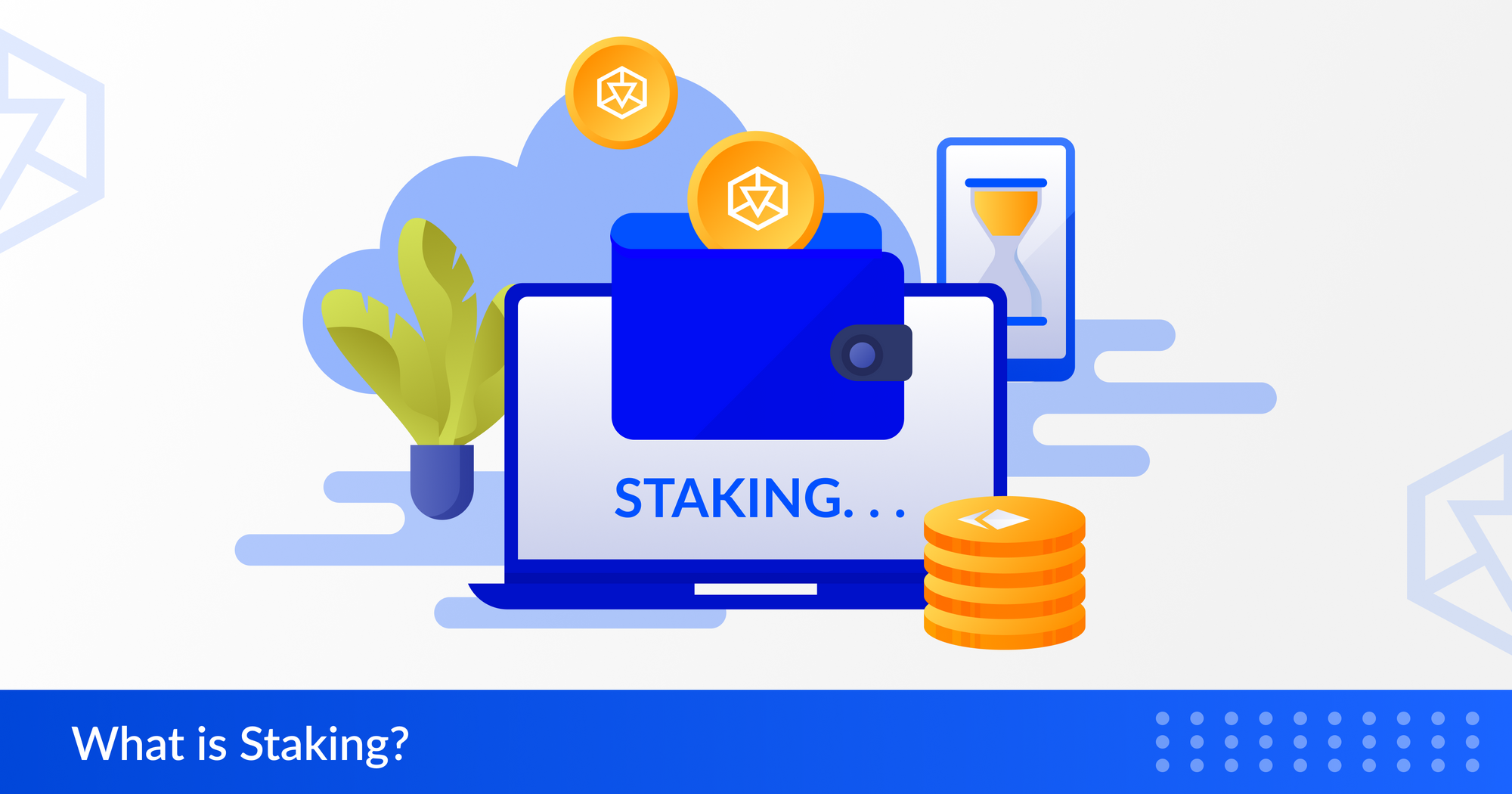Staking, like many other concepts in crypto, can be complex or simple, depending on how many layers of comprehension you want to reach. The main lesson for many traders and investors is that Staking is a means to receive rewards for holding on to specific cryptocurrencies. However, even if all you're after is some staking benefits, it's still helpful to know at least a little bit about how and why the system functions the way it does.
What is staking?
You can "stake" some of your cryptocurrency holdings in exchange for a percentage-rate return over time (if the cryptocurrency you own permits it). Some of the cryptos that offer staking options are Tezos, Cosmos, and Ethereum, thanks to the recent ETH2 update). Typically, a "staking pool", analogous to an interest-bearing savings account, is used to do this.
Your cryptocurrency generates rewards when it is staked because it is being used by the blockchain. The period it is staked is known as the staking period or the lock-in period.
Staking-enabled cryptocurrencies use a "consensus mechanism" called Proof of Stake (PoS) to guarantee that all transactions are secure and confirmed without the involvement of a centralised authority that processes and validates the payments. If you decide to stake your cryptocurrency, it joins that operation.
Why do only specific cryptocurrencies allow staking?
- It starts to become more technical at this point. Many people question why they can't stake Bitcoin. You will need to know a little bit of backstory to comprehend why.
- Decentralised, or the absence of a centralised authority, is one of the core characteristics of cryptocurrencies. How, therefore, without having the solution provided to them by a centralised entity like a bank or credit card firm, do all the computers in a decentralised network get the correct conclusion? Instead, a "consensus mechanism" is employed.
- A consensus technique known as Proof of Work is used by many cryptocurrencies, including Bitcoin. The network uses Proof of Work to solve issues like authenticating transactions between strangers on different sides of the world and therefore ensuring that no one attempts to spend the same amount of money twice. Ethereum has moved from Proof of Work to Proof of Stake to reduce the energy consumption of the network by more than 99.9%
- "Miners" from around the world compete to be the first to solve a cryptographic puzzle as part of the process. The winner receives cryptocurrency and the right to add the blockchain's most recent "block" of validated transactions.
- Proof of Work is a scalable method for a relatively simple blockchain like Bitcoin's, which tracks incoming and departing transactions much like a bank's ledger.
- However, Proof of Work can lead to bottlenecks when there is too much activity for something more complex like Ethereum, which has a wide range of apps running on top of the blockchain, including the entire world of DeFi. Transaction times may lengthen as a result, and costs may increase.
How does Proof of Stake work?
Proof of Stake, a more recent consensus technique, has surfaced to boost speed and efficiency while decreasing fees. By removing the need for all those miners to do energy-intensive arithmetic operations, Proof of Stake significantly lowers prices. Transactions are instead verified by users who have staked actual money into the blockchain.
- Staking performs a similar role to mining in that it selects a network participant to add the most recent batch of transactions to the blockchain and rewards them with cryptocurrency in return.
- Users risk their tokens for the opportunity to add a new block to the blockchain in exchange for a payout. The specific implementations differ from project to project. However, their staked tokens will legitimately support any new transaction they make to the blockchain.
What benefits does staking offer?
Many long-term cryptocurrency owners view staking as a means to put their holdings to use by producing rewards rather than letting them sit dormant in their wallets.
Staking also helps the blockchain projects you support by enhancing their effectiveness and security. This means when you stake your funds on the blockchain, you aid in increasing the blockchain's security and transaction processing capacity. (Some projects also distribute "governance tokens" to staking participants, allowing holders to vote on upcoming protocol updates.)
Do you know about TeraBlock Earn?
If you're enthusiastic about staking, do read more about TeraBlock Earn.
The TeraBlock platform consists of a suite of Defi instruments that allow users to invest, hold and exchange crypto assets in a safe and decentralized manner. TeraBlock Earn is a series of decentralised staking pools powered by TeraBlock’s native token $TBC. The pools provide a great opportunity for both beginners and mainstream investors to optimise their idle holdings.
TeraBlock Earn enables users to earn reliable returns simply by locking their $TBC in TeraBlock's staking pools. TBC holders can use TeraBlock staking to put their tokens to work on the Blockchain and earn passive income.
Learn more here: https://myterablock.medium.com/countdown-to-the-4th-tbc-staking-pool-409707268919





